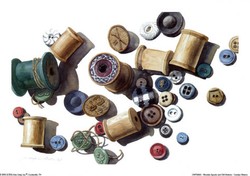How To Divide Fractions
by CEdward
This is a basic guide showing you the simple steps involved in dividing fractions.
Fractions are an easy way to represent a portion or percentage of something. The number at the top of the fraction is the numerator and at the bottom is the denominator. The fraction, 5/8, has the same meaning as 5 out of 8, which is the same as 0.625 or 62.5%. From this we can observe that if we have a smaller fraction divided by a larger fraction we will obtain a smaller result and if the two fractions are reversed we will obtain a larger result.
Unlike when we are adding or subtracting fractions, when dividing fractions, it is not necessary for each fraction to have similar denominators. In fact, when dividing two fractions we are actually not dividing at all but we use the operation of multiplication to carry out this process.
In the process of dividing one fraction into another, you essentially create a large fraction that contains the top fraction as a “numerator” and the bottom fraction as a “denominator.” To divide this bottom fraction in to the top, leave the top fraction as is and multiply it by the inverse of the bottom fraction. This inverse of the bottom fraction is simply the reordering of the fraction where the numerator and denominators are switched. This inverse fraction would also carry the same sign (+ or –) as the original fraction. Basically, what’s happening is you are multiplying both the top and bottom fractions of the division operation by the inverse of the bottom fraction which results in the bottom portion of the operation to result in one and the top portion remaining to be the top fraction multiplied by the inverse of the bottom. At this point the fraction division becomes fraction multiplication.
Let’s see a couple of examples to illustrate how this works.
1. Divide7/12 by 4/7.
So 7/12 is our “numerator” fraction and 4/7 is our “denominator” fraction. 7/12 remains as is and we find the inverse of 4/7 which is 7/4. We will now multiply this inverse by both the top and bottom fraction.
So we have, (7/12) / (4/7) = (7/12)(7/4) / (4/7)(7/4) = (7 x 7)/(12 x 4) / 1 = 49/48
49/48 = 1-1/48, and this is our answer simplified to a mixed fraction.
2. Divide 5/16 by -7/13.
So 5/16 is our top fraction and -7/13 is our bottom fraction and we will multiply each by the inverse of -7/13 which is -13/7.
So our division process is as follows, (5/16) / (-7/13) = (5/16)(13/-7) / (-7/13)(-13/7)
= (5 x 13)/(16 x -7) = -65/112, already simplified to its most basic term.
Related Articles from this author
You might also like
Buttons from the Rag Bag! Button Jar Math ActivitiesSave the buttons from discarded clothing and recycle them as fun, hands-on ma...


 How To Safely Secure Large Holiday Blow Molds From Wind Damageon 02/13/2012
How To Safely Secure Large Holiday Blow Molds From Wind Damageon 02/13/2012
 Tips On Protecting Your Holiday Blow Mold Decorations From Sun Damageon 02/08/2012
Tips On Protecting Your Holiday Blow Mold Decorations From Sun Damageon 02/08/2012

Comments